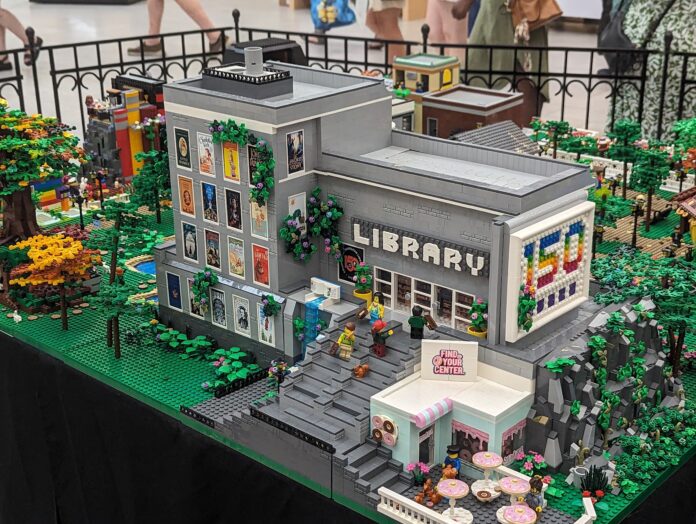This piece shows what characteristics an activity should have to have an optimal learning experience while playing.
“Learning Through Play: a review of the evidence” Excerpt
“Regardless of whether a play activity falls closer to free play, guided play or games on the continuum, we say that optimal learning through play happens when the activity (1) is experienced as joyful, (2) helps children find meaning in what they are doing or learning, (3) involves active, engaged, minds-on thinking (4) involves iterative thinking (e.g., experimentation, hypothesis testing), and (5) involves social interaction (the most powerful resource available to humans – other people). The selection of these characteristics is based on the theory presented by Hirsh-Pasek, Zosh, Golinkoff, Gray, Robb, & Kaufman (2015) where they provide evidence that a deep, conceptual understanding requires that children are active (minds-on) and engaged (not distracted) with meaningful material especially in socially interactive contexts. Here, we use this conceptualisation as a foundation, combined with a playful state of mind – joy and iteration – to further explain learning through play. The five characteristics ebb and flow as children are engaged in learning through play activities. All five characteristics are not necessary all the time, but over time children should experience moments of joy and surprise, a meaningful connection, be active and absorbed, iterate and engage with others. Joy is a necessary requirement for an experience to be playful. Indeed, the ‘…predominant emotions of play are interest and joy.’ (Gray, 2013, p. 18). When it comes to deeper learning, active engagement is necessary as one cannot imagine children reaching a depth of understanding and ability to apply without being minds-on and actively processing information or experiences. Additionally, learning through play requires that an experience is meaningful to the child. Exposure to abstract concepts that are not connected to children’s real-life experience may lead to shallow memorisation of information, but will not foster the type of deeper, flexible learning we wish to encourage. Together with a sense of agency, we suggest that joy, meaningfulness, and active engagement, are necessary for children to enter a state of learning through play, and the addition of any combination of the other two characteristics (iteration and social interaction) supports even deeper learning. Generally, the literature conceptualises play as existing along a continuum. At one end, free play gives children the freedom to explore, play, and discover with minimal constraints. But play is not just something that happens in a vacuum: our environments structure play (e.g., the materials available when playing in a home, in a yard, in urban environments, in rural environments, etc.) as do the peers, adults, and other people around us. And so, at the other end of the continuum is play that is more guided or structured. The term “playful learning” is an umbrella term that is used to include free play as well as these more structured, guided play contexts (see figure below). Additionally, researchers have recently added games under this umbrella (Hassinger-Das, Toub, Zosh, Michnick, Hirsh-Pasek, & Golinkoff, 2017). Playful learning can take many forms, including physical games such as hide and seek, construction play with blocks, board games, pretending with objects, or engaging in fantastical role play (see the literature review on play types and children’s development by Neale, Whitebread et al., 2017). Although there is ongoing debate in research and practice about where free play ends and more guided play begins (e.g. Pyle & Danniels, 2017), our goal in this piece is not to resolve this theoretical debate. Instead, we maintain that learning through play can happen through free play and when adults or aspects of the environment structure the play situation towards a particular learning goal.” (Zosh et. al. 2017).
.
REVIEW
This write-up is from the Lego Foundation and discusses what they know about learning through play, what they think about learning through play, and what they want to know about it. I think this is a great resource that explores the power of learning through play. The more important pieces that I took out of it were the levels of different types of play depending on parent’s guidance. Some guidance is okay, but optimal learning experience comes from children having their own agency. The other thing I enjoyed learning about were the five things they listed as needed for optimal learning through play. This involves having fun, iterative play, interactivity, social interactions, and finding meaning. I can absolutely use the information outlined by The Lego Foundation as a guide to considering how to design something as play without removing the children’s agency and promoting activities that allow for an optimal learning environment. It also discusses some holes in their research, which are areas I can explore further!
REFERENCES
Zosh, J. N., Hopkins, E. J., Jensen, H., Liu, C., Neale, D., Hirsh-Pasek, K., … & Whitebread, D. (2017). Learning through play: a review of the evidence. Billund, Denmark: LEGO Fonden.




